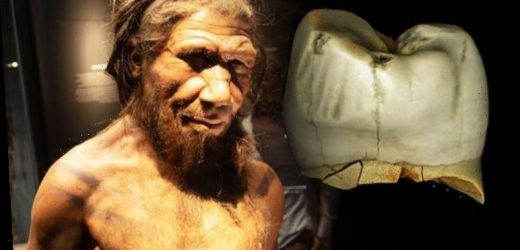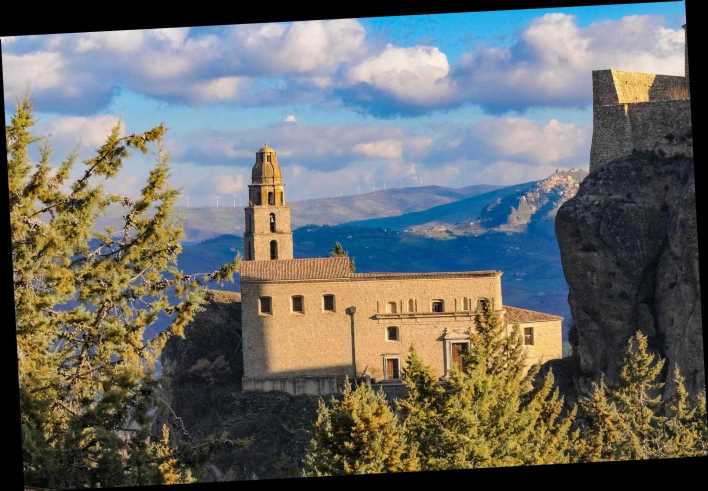Neanderthals: Expert discusses why species went extinct
When you subscribe we will use the information you provide to send you these newsletters.Sometimes they’ll include recommendations for other related newsletters or services we offer.Our Privacy Notice explains more about how we use your data, and your rights.You can unsubscribe at any time.
The fascinating insight into Neanderthal life was made at Jaskinia Stajnia (Stable Cave) in the south of Poland. More than 10 years ago, researchers discovered at the site a set of Neanderthal teeth from the Pleistocene period or about 46,000 years ago. An international team of researchers from Poland, Germany and the UK has now analysed the teeth, revealing a number of peculiar markings – signs of unsophisticated dental practices.
Their findings were published in the Journal of Human Evolution.
The teeth – an upper premolar and a wisdom tooth or lower third molar – belonged to two adult Neanderthals that died at a fairly young age, by today’s standards.
The older of the two died in his 30s while the other was just more than 20-years-old.
The researchers first got up close and personal with the teeth to determine whether they belonged to our cousin, Homo neanderthalensis, or our species, Homo sapiens.
Once the teeth were identified, they were recreated as 3D and 2D models for further analysis.
One of the teeth revealed clear grooves and scrapes left behind by a bone or twig – a rudimentary toothpick.
Dr Wioletta Nowaczewska from the University of Wroclaw, the study’s lead author, said: “It can be assumed the tooth’s owner practised oral hygiene procedures.
“There was probably food debris between the last two teeth that had to be removed.
“We don’t know what he made the toothpick from – a piece of twig, a piece of bone or a fish bone.
Neanderthals: Most people carry the DNA claims expert
“It must have been a fairly stiff, cylindrical object that was used so often there was a clear trace of it.”
According to the researchers, this is the second time teeth found at Jaskinia Stajnia have shown signs of crude dentistry.
They are now hoping to learn more about our extinct cousins, believing a wealth of knowledge could still be waiting to be found within the cave.
Dr Nowaczewska told the Polish Press Agency (PAP): “When I look at these areas as a paleoanthropologist, I am under the impression time stood still there.
“If there still are any Neanderthal bone remains to be found, then the search should focus on Jura and other southern regions.
DON’T MISS…
Archaeology news: Study finds Neanderthals also used Homo sapiens tech [STUDY]
Archaeology hunt for shipwreck holding £1billion treasure [REPORT]
Egypt expert baffled by ‘high-ranking’ gold tongued mummy [INSIGHT]
“Due to climatic conditions, this was where the best living conditions prevailed.”
A similar discovery was presented four years ago in the Bulletin of the International Association for Paleodontology.
Neanderthal remains found near Kripina in modern-day Croatia had similar grooves etched into the teeth but made much earlier – about 130,000 years ago.
In this case, however, the Neanderthal may have been dealing with a toothache and not bits of food stuck between teeth.
David Frayer, professor emeritus of Anthropology at the University of Kansas, said: “As a package, this fits together as a dental problem that the Neanderthal was having and was trying to presumably treat itself, with the toothpick grooves, the breaks and also with the scratches on the premolar.
“It was an interesting connection or collection of phenomena that fit together in a way that we would expect a modern human to do.
“Everybody has had dental pain, and they know what it’s like to have a problem with an impacted tooth.”
Neanderthals are believed to have thrived between 600,000 and 40,000 in parts of Central Asia and Europe.
Scientists are yet to find what led to their demise, although a mix of disease, war and climate change may have played a role.
Source: Read Full Article






